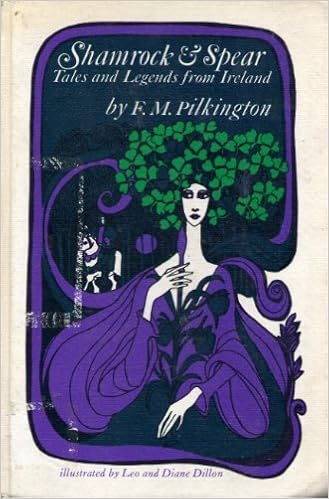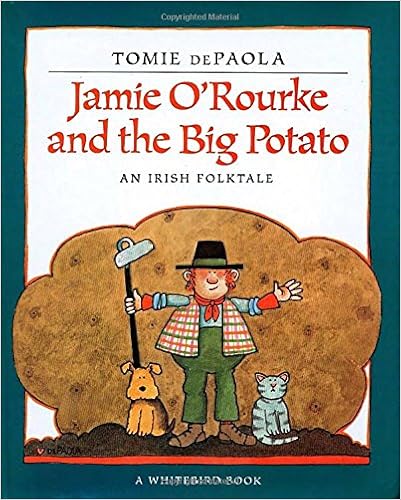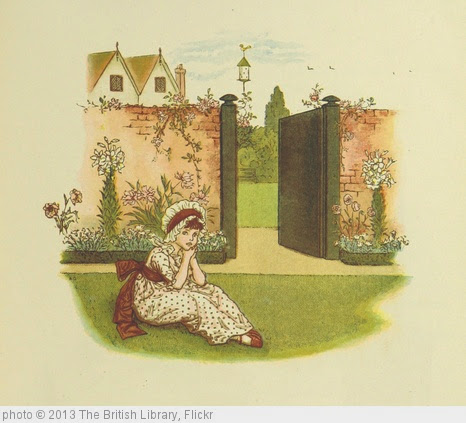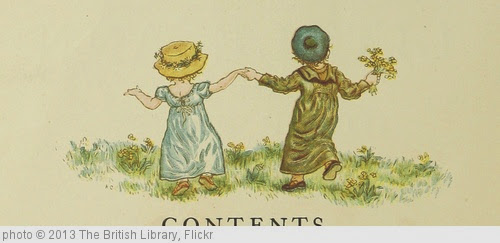I have several books for St. Patrick’s Day or about Saint Patrick and Ireland in my library:
 Shamrocks, Harps, and Shillelaghs: The Story of St. Patrick’s Day Symbols by Edna Barth is more than just a listing of St. Patrick’s Day symbols and customs. It’s a children’s introduction to the history and culture of Ireland, with chapters on Irish literature and poetry, the history of Irish Catholics and Protestants, Irish dress and food, and Irish folklore, as well as the story of St. Patrick himself threaded throughout the ninety-five page book. And there’s bibliography of “Stories for St. Patrick’s Day” at the back of the book which includes many of the books on this list.
Shamrocks, Harps, and Shillelaghs: The Story of St. Patrick’s Day Symbols by Edna Barth is more than just a listing of St. Patrick’s Day symbols and customs. It’s a children’s introduction to the history and culture of Ireland, with chapters on Irish literature and poetry, the history of Irish Catholics and Protestants, Irish dress and food, and Irish folklore, as well as the story of St. Patrick himself threaded throughout the ninety-five page book. And there’s bibliography of “Stories for St. Patrick’s Day” at the back of the book which includes many of the books on this list.
St. Patrick, The Irish Saint by Ruth Roquitte, illustrated by Robert Kilbride. “There’s a day in the spring when people wear green. . . On that day almost all of us would like to be Irish.” This book tells the story of the life of Magonus Sucatus Patricius, the man we call Saint Patrick in forty-six page with illustrations. It would be a good read aloud book to introduce children to the man and the holiday named in his honor.
 Shamrock and Spear: Tales and Legends from Ireland by F.M. Pilkington, illustrated by Leo and Diane Dillon. Tales of giants and beasts, princesses and dwarves, Cormac Mac Art and Fionn Mac Cool make up this well told collection of more than twenty Irish folktales.
Shamrock and Spear: Tales and Legends from Ireland by F.M. Pilkington, illustrated by Leo and Diane Dillon. Tales of giants and beasts, princesses and dwarves, Cormac Mac Art and Fionn Mac Cool make up this well told collection of more than twenty Irish folktales.
St. Patrick’s Day in the Morning by Eve Bunting, illustrated by Jan Brett. Young Jamie Donovan wants to march in the St. Patrick’s Day parade, but his family says he’s much too small to make it all the way to the top of Acorn Hill. Read about how Jamie proves that he is big enough to march.
Pegeen by Hilda van Stockum. Pegeen is something of a wild thing who makes up stories and dances like a gypsy and gains the affection of the entire O’Sullivan family in spite of her irresponsible ways. Other books about the O’Sullivan family of Bantry Bay are Francie on the Run, which takes place before Pegeen and The Cottage at Bantry Bay, the third book in the series.
 Count Your Way Through Ireland by James Haskins. A numerical introduction to the country of Ireland with numbers in Gaelic, counting such things as sports, symbols, foods, stripes in the Irish flag, and one and only one St. Patrick himself.
Count Your Way Through Ireland by James Haskins. A numerical introduction to the country of Ireland with numbers in Gaelic, counting such things as sports, symbols, foods, stripes in the Irish flag, and one and only one St. Patrick himself.
Favorite Fairy Tales Told in Ireland by Virginia Haviland. Five stories suitable for elementary aged children.
The King of Ireland’s Son by Padraic Colum, illustrated by Willy Pogany. Mr. Colum was a poet and a playwright and a friend of James Joyce, but his retelling of myths, legends, and folklore for children came to be his most enduring work. The King of Ireland’s Son is a novel based on an old Irish tale about a prince who wins his bride, Fedelma the Enchanter’s Daughter, but must reclaim her after a long and adventurous journey of searching for the kidnapped Fedelma.
 Jamie O’Rourke and the Big Potato by Tomie dePoala.
Jamie O’Rourke and the Big Potato by Tomie dePoala.
Jamie O’Rourke and the Pooka by Tomie dePaola. These two picture books tell about Jamie O’Rourke, the laziest man in all of Ireland and his adventures with first, a leprechaun and then, a pooka. Jamie’s lazy ways get him into troubles, but for the most part all ends well for the lazy Jamie.
Do you know of any other Irish and St. Paddy’s Day books for children that are must-haves for my library?

 LORD, Thou has with favour
LORD, Thou has with favour













